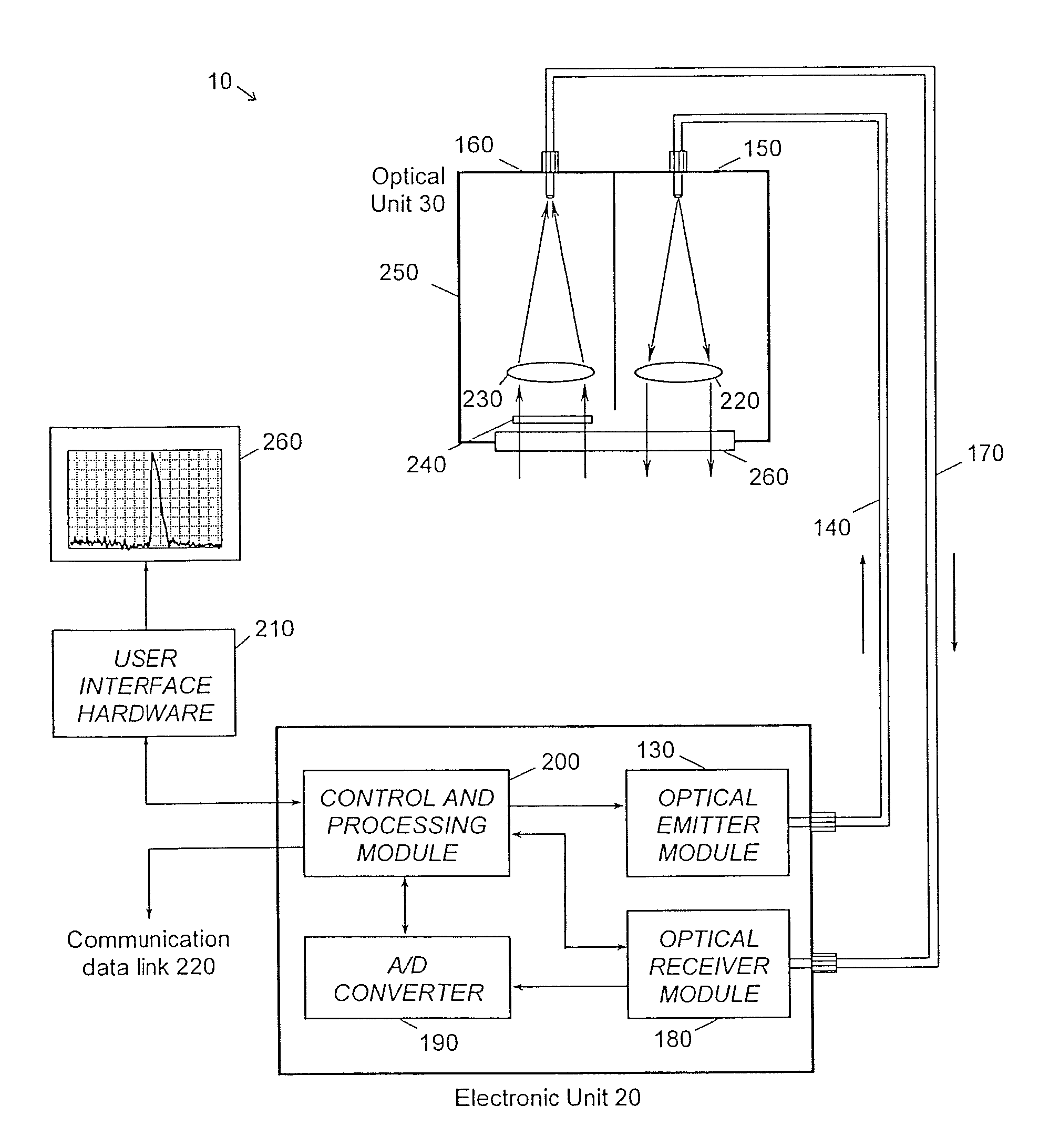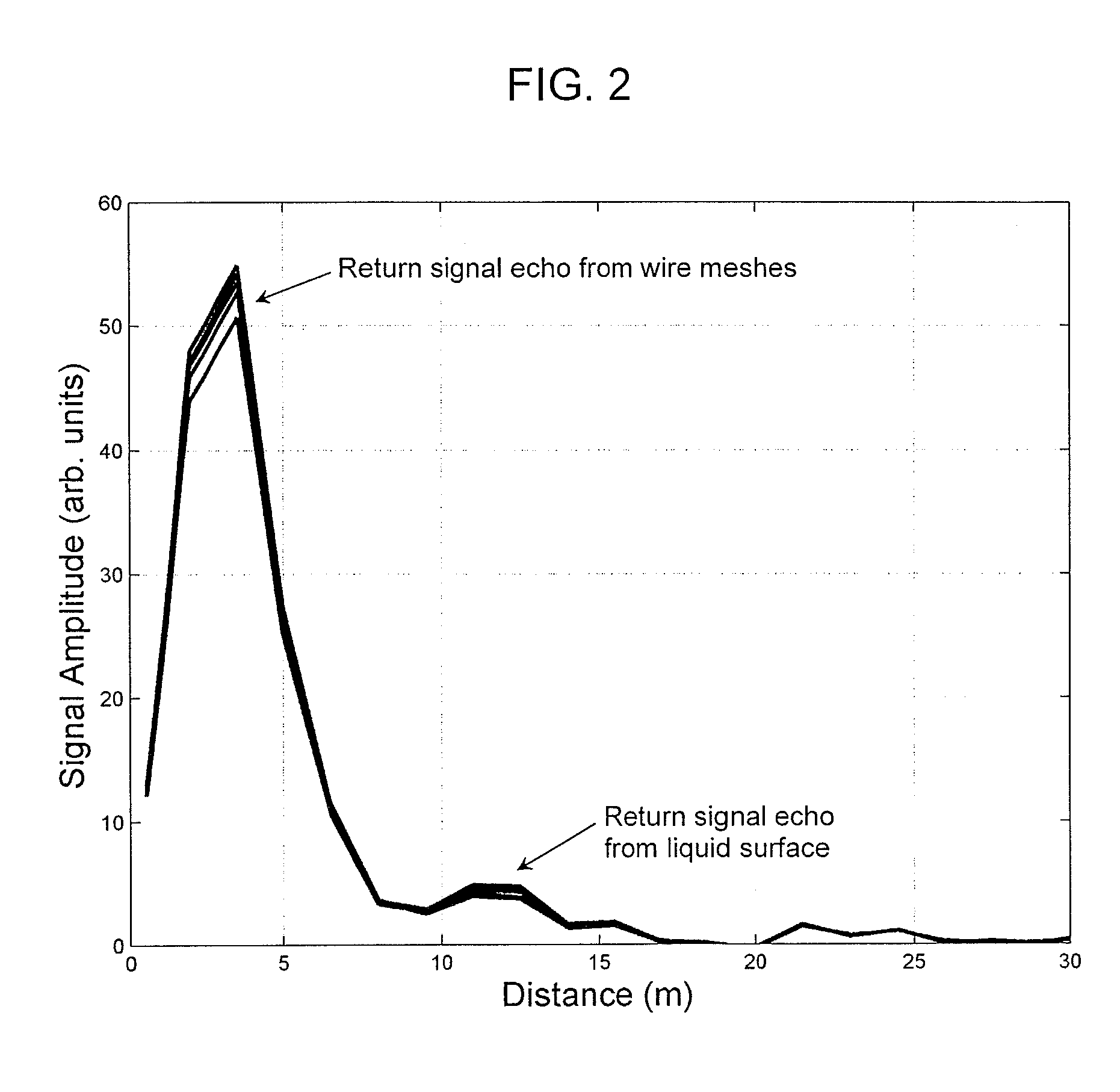Method and apparatus for optical level sensing of agitated fluid surfaces
a technology of optical level sensing and fluid surface, which is applied in the direction of liquid/fluent solid measurement, instruments, machines/engines, etc., can solve the problems of lidar tank gauges that operate with such reflectors that cannot be qualified as non-contact instruments, reflectors can no longer be used as liquid contaminants, etc., to achieve accurate and reliable measurements
- Summary
- Abstract
- Description
- Claims
- Application Information
AI Technical Summary
Benefits of technology
Problems solved by technology
Method used
Image
Examples
Embodiment Construction
[0028]FIG. 1 is a schematic illustration of a liquid-level measurement application that represents a preferred mode of practicing the invention with its various embodiments. A lidar tank-gauging device 10 is shown in FIG. 1 with a preferred design configuration wherein the device is made up of an electronic unit 20 remote from an optical unit 30, the units being linked to each other only through light transmission means 40. The light transmission means 40 consist preferably of two optical fibers. The optical unit 30 is mounted on the roof of a liquid storage tank or vessel 50, and a window 60 made of a suitable optical material provides optical access to the interior of the tank 50. Although the storage tank shown in FIG. 1 is stationary, the apparatus of the present invention can be used with tanks or containers mounted in transportation means as well. Likewise, both electronic unit 20 and optical unit 30 can be enclosed in the same housing located on the roof of the tank 50 withou...
PUM
 Login to View More
Login to View More Abstract
Description
Claims
Application Information
 Login to View More
Login to View More - R&D
- Intellectual Property
- Life Sciences
- Materials
- Tech Scout
- Unparalleled Data Quality
- Higher Quality Content
- 60% Fewer Hallucinations
Browse by: Latest US Patents, China's latest patents, Technical Efficacy Thesaurus, Application Domain, Technology Topic, Popular Technical Reports.
© 2025 PatSnap. All rights reserved.Legal|Privacy policy|Modern Slavery Act Transparency Statement|Sitemap|About US| Contact US: help@patsnap.com



